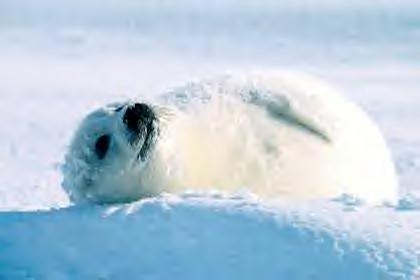|
Law School to Give Inuit "Tools to
Instigate Change"
Some will say they're spoiling paradise, but the Nunavut government intends to establish
a law school this year to populate the Arctic territory with Inuit lawyers.
|
|
Class Draws Indians to Journalism
An effort to bring more diversity into America's newsrooms will unfold this summer
during the month-long American Indian Journalism Institute at the University of South Dakota.
|
|

|
|

|
| |
|
|
|
A Return of the Natives
LEWISTON, Idaho - When Horace Axtell was a boy in the 1920s and '30s, his grandmother
would take him on fishing and berry-gathering trips in the Idaho mountains. Like most Nez Perce, they would often
work in the forest for two or three weeks at a time. It was on one of those long trips that he heard a wolf howl.
|
|
When Thunderbird Battled Whale, the Earth
Shook
"There was a shaking, jumping up and trembling of the earth beneath, and a rolling
up of the great waters."
|
|

|
|

|
| |
|
|
|
Saving Native Languages
On February 23, American Indian and Alaska Native scholars, native language instructors,
and community leaders gathered at the United States Senate for a symposium entitled “Saving Native Languages.”
|
|
Navajo Language Essential
There was a welcome sigh of relief to Arizona Attorney General Janet Napolitano's decision
that the English-only proposition approved by Arizona voters does not apply to tribal or federal schools.
|
|

|
|

|
| |
|
|
|
Font Moves Cherokee Language into Digital
Age
TAHLEQUAH -- The Cherokee language that has echoed across North America for centuries
now resounds in cyberspace as well. In the week since it was placed on the Cherokee Nation web site, more than
1,300 people have downloaded a font that allows computer users to communicate in the Cherokee language.
|
|
Artisans Program Making "Grandmother's
Dream" Come True
As artisans, Roy Talahaftewa and Victor Lee Masayesva know the challenges—and the rewards—of
starting a successful business. Now, the two are sharing their experiences with other aspiring artists, starting
an enterprise at Second Mesa called So-oh’s Tunatya, or Grandmother’s Dream.
|
|

|
|

|
| |
|
|
|
Have You Ever Seen a Real Indian?
The American Indian College Fund announced today the launch of a new advertising campaign
that challenges "Indian'' stereotypes by profiling strong, successful Native American people. Created by long-time
College Fund advertising agency, Wieden + Kennedy/Portland, the print campaign is expected to appear in April publications.
|
|
Local American Indian Wins Honor
Shawna Kirsten’s dream to improve the tribal court system has won the Hungry Valley
woman one of 16 spots in a nationwide program that promotes leadership skills among members of American Indian
tribes.
Kirsten, a member of the Reno-Sparks Indian Colony, has been selected to participate
in this year’s national American Indian Ambassadors Program.
|
|

|
|

|
| |
|
|
|
Hampton Has Cool Vibe with Tribe
LAPWAI, Idaho _ Though he's performed for kings and heads of state, and played in the
world's greatest concert halls, Lionel Hampton was content to hold court Thursday afternoon in the bleacher-lined
gym of Lapwai Elementary School.
|
|
Camp Ditches Indian Motif
BLACK MOUNTAIN – The totem poles are gone. No longer will camp counselors wear ceremonial
headdresses and be referred to as "chief." The age groups are now named for indigenous trees rather than
Indian tribes.
|
|

|
|

|
| |
|
|
|
The History of Sequoyah
Family tradition tells us that Sequoyah (S-si-qua-ya) was born west of Chillhowee Mountain,
which is approximately one and a half miles east of Tasgigi, Monroe County, Tennessee. This location is only about
8 miles from Echota, the capital of the old Cherokee Nation. As far as his birth year, the best estimation is from
1760 to 1765.
|
|
Remnants of Old Indian Tribe Documented
Growing up along Bayou Dularge, Janie Verret Luster knew that the ground beneath her
feet was rich with the history of her ancestors.
As a girl, she remembers occasionally finding shards of old pottery in the mud piled
along the bank, spoil from a before-she-was-born dredging of the bayou.
|
|

|
|

|
| |
|
|




